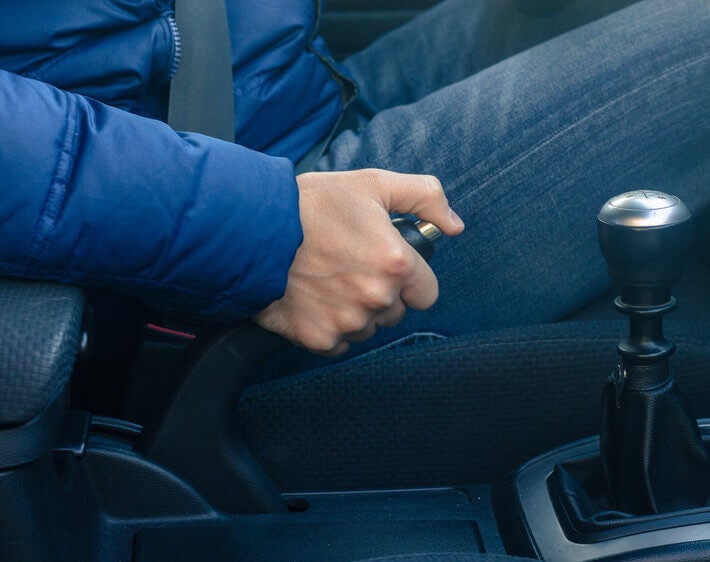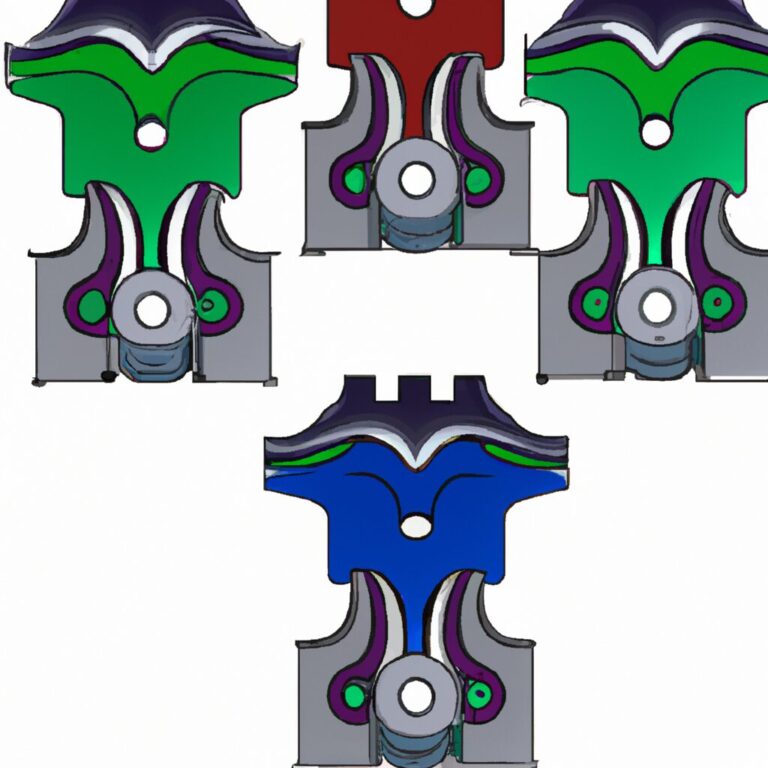How to Release a Stuck E Brake
To release a stuck E brake, first, try gently rocking the vehicle back and forth. If that doesn’t work, release and reengage the E brake multiple times.
Dealing with a stuck emergency brake can be frustrating, but it’s a common issue that many drivers encounter. Whether your E brake is not properly disengaging due to rust or corrosion or simply needs adjustment, there are several methods you can try to free it up.
In this guide, we’ll explore some simple yet effective ways to release a stuck E brake and get back on the road safely. By following these steps, you can prevent further damage to your vehicle and ensure smooth driving experiences in the future. Let’s dive in and learn how to address this common car problem.
Importance Of Releasing A Stuck E-brake
When it comes to the safe operation of your vehicle, releasing a stuck emergency brake (E-brake) becomes crucial. The E-brake, also known as the parking brake, plays a vital role in preventing your vehicle from rolling when parked, especially on inclines. However, if the E-brake gets stuck, it can lead to several issues that can affect both the performance and safety of your vehicle. In this article, we will explore the importance of releasing a stuck E-brake and how it can help prevent damage to the brake system while ensuring safe and smooth driving.
Preventing Damage To The Brake System
When the E-brake is stuck, it places a constant strain on the brake system. This strain can negatively impact various components of the brake system, including the brake cables, brake pads, rotors, and calipers. As a result, the excessive pressure and friction caused by the stuck E-brake can lead to accelerated wear and tear. Ultimately, this can result in costly repairs and the need for a brake system replacement. By releasing a stuck E-brake, you can prevent this damage and help maintain the longevity of your vehicle’s brake system.
Ensuring Safe And Smooth Driving
Having a stuck E-brake can significantly affect your driving experience. When the E-brake is engaged or partially engaged due to being stuck, it can create drag on the wheels. This additional resistance can cause the vehicle to feel sluggish, affecting acceleration and overall performance. Moreover, driving with a stuck E-brake can also result in uneven brake pad wear, compromising the vehicle’s braking ability and potentially leading to longer stopping distances. By releasing a stuck E-brake, you can ensure safe and smooth driving, improving both your vehicle’s performance and your overall driving experience.
In conclusion, the importance of releasing a stuck E-brake cannot be understated. Doing so not only helps prevent damage to the brake system but also ensures safe and smooth driving. If you encounter a stuck E-brake, it is essential to address the issue promptly. In the upcoming sections, we will dive into how to release a stuck E-brake and provide you with step-by-step instructions to resolve the problem efficiently.

Credit: www.firestonecompleteautocare.com
Identifying A Stuck E-brake
If your e-brake is stuck, try these steps to release it. Start by ensuring your car is parked securely and then locate the release lever. Gently pull or push the lever to release the e-brake. If the lever is obstructed, it may be necessary to seek professional assistance.
Signs Of A Stuck E-brake
If your E-brake is stuck, you may notice the following signs:
- `
`
- The car doesn’t move despite releasing the brake. ` `
- A burning smell when driving. ` `
- The brake light remains on in the dashboard. ` `
- Unusual noises like grinding or squeaking. ` `
Common Causes Of A Stuck E-brake
Several reasons could lead to an E-brake getting stuck:
- `
`
- Dirt and debris buildup in the E-brake system. ` `
- Corrosion or rust on the brake components. ` `
- Worn-out brake cables or a faulty release mechanism. ` `
- Overuse of the brake leading to overheating and sticking. ` `
Identifying a stuck E-brake is crucial for safe driving and preventing further damage to your vehicle. Recognizing the signs and understanding the causes can help in promptly addressing the issue.
Tools And Equipment Needed
Before attempting to release a stuck e-brake, ensure you have the necessary tools and equipment. Here’s what you’ll need:
Basic Tools
- A jack to lift the vehicle
- Jack stands for safety
- Flathead screwdriver
- Adjustable wrench
Common Techniques
- Engage and disengage the e-brake multiple times
- Rock the vehicle back and forth
- Apply WD-40 or similar lubricant
Step-by-step Guide To Releasing A Stuck E-brake
Are you facing trouble with a stuck E-brake? Don’t worry, we’ve got you covered. In this step-by-step guide, we’ll walk you through the process of releasing a stuck E-brake. From safety precautions to troubleshooting the issue and release techniques, we’ll cover everything you need to know to get your E-brake back in working order.
Safety Precautions
Before you attempt to release a stuck E-brake, it’s important to prioritize your safety. Follow these safety precautions to prevent any accidents or injuries:
- Engage the parking brake: Ensure that the vehicle is parked on a flat surface and engage the parking brake.
- Locate wheel chocks: Use wheel chocks to prevent the vehicle from rolling. Place them behind the rear wheels if you’re dealing with a rear E-brake or in front of the front wheels if you’re dealing with a front E-brake.
- Wear protective gear: Put on protective gloves and eyewear before beginning the process to shield yourself from any potential harm.
Troubleshooting The Issue
If your E-brake is stuck, there could be a few reasons behind this issue. Troubleshooting the problem will help you identify the cause and determine the appropriate release technique. Here are some common causes of a stuck E-brake:
| Cause | Possible Solution |
|---|---|
| The E-brake cable is frozen | Apply heat to the frozen cable using a hairdryer or warm water to thaw it. |
| Rust and corrosion on the E-brake components | Spray a rust penetrant on the affected components and let it sit for a few minutes before attempting to release the E-brake. |
| Debris or dirt buildup | Clean the E-brake assembly thoroughly, removing any dirt or debris that may be causing the sticking issue. |
Release Techniques
Now that you have identified the potential cause, it’s time to release the stuck E-brake. Here are some effective release techniques you can try:
- Apply gradual pressure: Get into the vehicle, start the engine, and depress the brake pedal. Gradually release the parking brake while maintaining pressure on the brake pedal. This technique can help disengage the stuck E-brake.
- Tap the E-brake handle or pedal: Give the E-brake handle or pedal a few gentle taps to loosen any stuck components. This can help free up the mechanism and release the brake.
- Use a lubricant: Apply a suitable lubricant to the E-brake mechanism and allow it to penetrate the stuck parts. This can help reduce friction and make it easier to release the E-brake.
Remember, if you are unsure about releasing a stuck E-brake or if the issue persists after attempting these techniques, it is recommended to consult a professional mechanic for assistance. They have the expertise and tools to resolve the problem safely and efficiently.
Preventative Measures And Maintenance
Preventative measures and maintenance are crucial for ensuring the proper functioning of your E-brake. By following these measures, you can prevent your E-brake from getting stuck, avoiding potential mishaps and costly repairs.
Regular E-brake Inspection:
Regular inspections of your E-brake system are essential to identify any potential issues early on. Make it a habit to visually inspect the E-brake components, including the cable, lever, and pads, for any signs of wear and tear or rust accumulation. Addressing these issues promptly can prevent the E-brake from getting stuck.
Proper Usage Practices:
Using the E-brake correctly can prevent it from getting stuck. Always engage the E-brake when parking on an incline, ensuring the vehicle is in a stationary position. Avoid pulling the E-brake too hard, as it can lead to excessive tension and potential sticking. Additionally, be mindful of releasing the E-brake smoothly to prevent abrupt disengagement.

Credit: www.wikihow.com

Credit: wrench.com
Frequently Asked Questions On How To Release A Stuck E Brake
How Do You Manually Release A Stuck E-brake?
To manually release a stuck e-brake, locate the lever or pedal and press or pull it down firmly. If it doesn’t budge, check for any obstructions or ice around the mechanism. Applying some lubricant or tapping it gently might help.
Seek assistance from a professional if the problem persists.
How Do You Manually Disengage A Parking Brake?
To manually disengage a parking brake, locate the lever or pedal near the driver’s side. Pull or release it to free the brake’s hold on the wheels.
How Do You Release A Seized Brake?
To release a seized brake, apply lubricant to the brake components, gently tap the brake drum or rotor, then attempt to slowly drive the vehicle in reverse. If the brake is still seized, seek professional help from a mechanic.
Why Won’t My Brakes Disengage?
Brakes won’t disengage because of several reasons like a faulty brake pedal, worn-out brake pads, or a malfunctioning brake system. Seek professional help to diagnose the exact cause and ensure your safety while driving.
How Can I Tell If My E-brake Is Stuck?
To check if your e-brake is stuck, listen for unusual sounds and feel for resistance when pulling the e-brake lever.
What Are The Common Causes Of A Stuck E-brake?
A stuck e-brake can be caused by rusty cables, a faulty e-brake lever, or dirt and debris hindering the mechanism.
Can I Release A Stuck E-brake On My Own?
Yes, you can release a stuck e-brake on your own by applying and releasing the e-brake multiple times or adjusting the cables.
Conclusion
Freeing a stuck e-brake is a relatively simple task if you follow these steps. Remember to first identify the cause of the issue and then proceed with the appropriate solution, whether it’s adjusting the cable tension, lubricating the e-brake mechanism, or seeking professional assistance.
By performing regular maintenance and being mindful of the signs of a stuck e-brake, you can ensure your vehicle’s safety and prevent further complications. Follow these tips to release a stuck e-brake easily and get back on the road with peace of mind.

